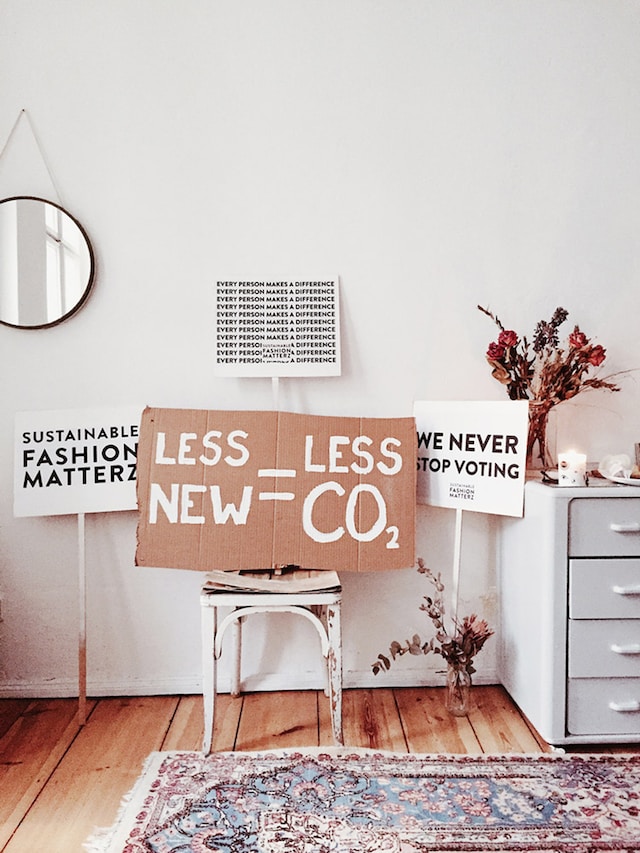In the world of fashion, there are many misconceptions about sustainable fashion that need to be debunked. In this blog, we will separate fact from fiction and shed light on the truth behind these myths. Sustainable fashion is often misunderstood, with false beliefs surrounding ethical clothing and eco-friendly fashion. It’s time to set the record straight and challenge these misconceptions head-on. By uncovering the truth, we can pave the way for a more informed and conscious approach to our fashion choices.
Myth 1: Sustainable Fashion is Too Expensive
Reality Check: The belief that sustainable fashion is exclusively high-priced is a misconception. Many brands offer affordable, eco-friendly options, proving that sustainability in fashion is accessible to a broader audience. This shift challenges the notion that eco-conscious fashion is a luxury, making it a viable choice for various economic backgrounds.
Myth 2: Eco-Friendly Equals Less Fashionable
Reality Check: The idea that sustainable fashion lacks style is outdated. Modern sustainable fashion rivals traditional fashion in design and trends, demonstrating that eco-conscious choices do not require sacrificing style. This evolution in sustainable fashion showcases its ability to meet diverse aesthetic preferences.
Myth 3: Recycling Solves Everything
Reality Check: The notion that recycling is a panacea for fashion’s environmental impact is misleading. Recycling complexities, especially for blended materials, highlight that sustainable fashion is more about reducing overall consumption and waste, rather than solely relying on recycling.
Myth 4: Only New Clothes Can Be Sustainable
Reality Check: The misconception that sustainability only applies to new garments overlooks the value of reusing and repurposing existing clothing. Thrift and vintage fashion play a crucial role in sustainable practices by reducing waste and extending the lifecycle of garments.
Myth 5: Sustainable Fashion Doesn’t Impact the Economy
Reality Check: Contrary to the belief that sustainable fashion is economically insignificant, it positively influences the economy. It promotes ethical labor, supports local artisans, and encourages eco-friendly materials, contributing to a more balanced and sustainable economic model.
Myth 6: It’s Just a Trend
Reality Check: Viewing sustainable fashion as a fleeting trend underestimates its significance. It represents a fundamental shift towards ethical and environmentally conscious practices in fashion, reflecting a growing global awareness and a commitment to long-term change.
Myth 7: Sustainable Fashion Is Only for ‘Eco-Warriors’ or Activists
Reality Check: The perception that sustainable fashion is exclusive to environmental activists is inaccurate. It appeals to a broad audience seeking quality, style, and ethical production, making it a mainstream choice beyond just the environmentally dedicated.
Myth 8: There’s Limited Choice in Sustainable Fashion
Reality Check: The idea that sustainable fashion offers limited styles is a myth. The industry boasts a diverse range of sustainable options, catering to various fashion tastes and preferences, from casual wear to high-end designs.
Myth 9: Eco-Friendly Fabrics Are the Only Aspect of Sustainable Fashion
Reality Check: Sustainable fashion encompasses more than just the use of eco-friendly fabrics. It includes ethical labor practices, reducing carbon footprints, and minimizing water usage, representing a holistic approach to the entire garment lifecycle.
Myth 10: Sustainable Fashion Can’t Make a Real Difference
Reality Check: The belief that individual choices in fashion have little impact is misleading. Collective consumer demand for sustainable products can significantly influence industry practices, demonstrating the power of informed and conscious consumer choices.
Myth 11: Only Luxury Brands Can Be Truly Sustainable
Reality Check: The notion that sustainability is exclusive to luxury brands is false. Many small and medium enterprises are pioneering sustainable practices, showing that commitment to environmental and ethical standards spans across various market segments.
Myth 12: Sustainable Fashion is Only About Environmental Concerns
Reality Check: Sustainable fashion extends beyond environmental sustainability. It also focuses on social responsibility, including fair wages, safe working conditions, and respecting workers’ rights, aiming for a positive impact on both the planet and its people.
Myth 13: Sustainable Fashion Is Just About Organic Materials
Reality Check: While organic materials are important, sustainable fashion also involves ethical sourcing, energy-efficient production, and waste minimization. It’s a comprehensive approach that extends beyond the materials to the entire production and supply chain.
Myth 14: Second-Hand Clothing Isn’t Truly Sustainable
Reality Check: The idea that only new, sustainably made clothes are eco-friendly overlooks the sustainability of second-hand clothing. Buying used garments extends their life, reduces waste, and is a key aspect of a sustainable fashion approach.
Myth 15: Sustainable Fashion Brands Don’t Care About Profit
Reality Check: The assumption that sustainable brands are not profit-oriented is incorrect. Many such brands successfully balance ethical practices with financial health, proving that companies can be both environmentally responsible and economically viable.
Myth 16: All Vegan Clothing is Sustainable
Reality Check: The belief that all vegan clothing is sustainable is a misconception. Some vegan materials can be synthetic and harmful to the environment, highlighting the need for a comprehensive assessment of sustainability beyond just being animal-product-free.
Myth 17: Sustainability Is Only for Developed Countries
Reality Check: The view that sustainable fashion is a privilege of developed countries is misleading. Many developing countries are at the forefront of sustainable practices, often integrating traditional, eco-friendly methods in textile production.
Myth 18: You Have to Sacrifice Comfort for Sustainability
Reality Check: The misconception that sustainable clothing compromises on comfort is unfounded. Many sustainable fabrics are known for their comfort and practicality, offering a harmonious blend of sustainability and wearability.
Myth 19: Sustainable Fashion Doesn’t Support Innovation
Reality Check: The idea that sustainable fashion is resistant to innovation is incorrect. The industry is a hub of creativity, constantly exploring new materials, production methods, and business models to enhance sustainability and appeal.
Myth 20: Sustainable Fashion Is Difficult to Maintain
Reality Check: The belief that sustainable garments require special care or are less durable is a myth. In fact, many sustainable clothing items offer similar or even better longevity and maintenance ease compared to conventional fashion.
These revised reality checks provide a more uniform and concise exploration of the myths surrounding sustainable fashion, offering readers a clear and comprehensive understanding of the topic.
Myth 21: The Country of Origin Defines a Garment’s Sustainability
Reality Check: There’s a common belief that a garment’s sustainability is determined by the country where it’s made. However, sustainability is not confined to geographic borders. It’s about the practices used in the production process, regardless of the country of origin. Sustainable fashion can be produced anywhere, provided it adheres to ethical labor practices, uses eco-friendly materials, and employs processes that minimize environmental impact. This myth overlooks the global nature of the fashion industry and the varied sustainable practices employed by different countries.
Conclusion: A Step Towards True Sustainability
Debunking these myths about sustainable fashion reveals a path towards genuine change in the industry. It’s not just about choosing eco-friendly clothes; it’s about a broader commitment to ethical practices and environmental responsibility. As consumers, our choices have power. By supporting truly sustainable brands and being mindful of our consumption, we contribute to a more sustainable and just fashion industry. Let’s embrace this knowledge and move towards a future where fashion respects both people and the planet.







